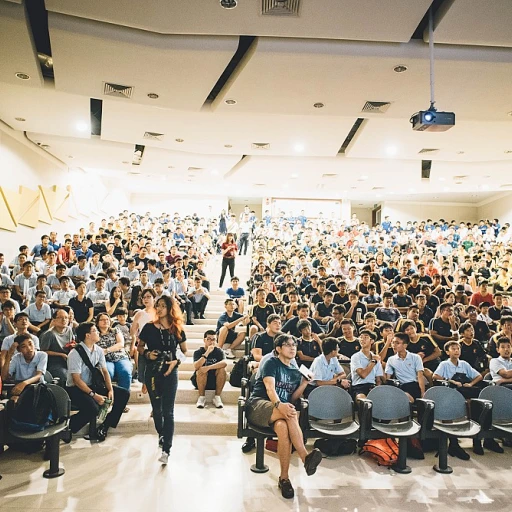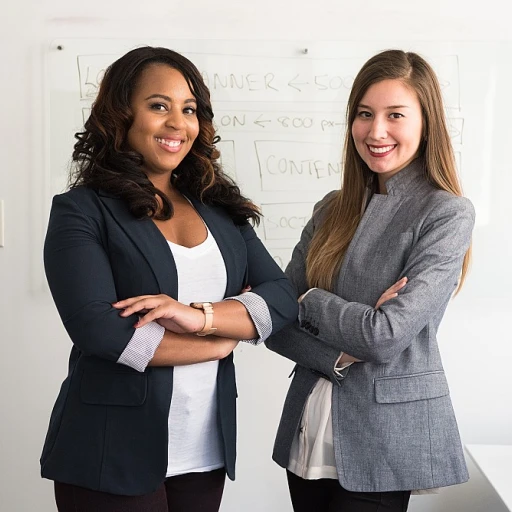
Understanding the Role of Training in Succession Planning
The Power of Targeted Training in Preparing for the Future
In the realm of succession planning, the role of training cannot be overstated. As organizations strive to build a resilient leadership pipeline, understanding the strategic importance of training becomes crucial. Training serves as the backbone for molding tomorrow's leaders, equipping them with the skills necessary to navigate complex organizational landscapes. The strategic emphasis on training is not merely about imparting information—it's about developing both soft and hard skills that future leaders need. A well-structured training program addresses the specific competencies required for leadership roles. This leads to more effective results compared to generic training approaches that do not address the unique demands of a given organization. To achieve a successful transfer of knowledge, recognizing the distinction between various learning styles is key. Online and virtual courses add flexibility and accessibility, especially in diverse or global teams. Facilitators play an essential role in this process by tailoring training sessions to address the unique learning needs of participants. Effective facilitation ensures that group dynamics and individual contributions are harnessed during training, maximizing learning. Moreover, embracing tools like liberating structures and design sprints can enhance facilitation techniques. Such methods bring innovation to the training environment, ensuring that participants engage meaningfully with the material. This lays a foundation for continuous learning, a concept we'll explore further. For organizations keen on maximizing their training efforts, the use of facilitation skills and proven facilitation methods can bridge the gap between current capabilities and the desired leadership profile. To dive deeper into this subject, consider exploring insights on unlocking the potential for development in succession planning. By investing in a future-forward training strategy, companies position themselves to support not only immediate growth but sustainable success, ensuring that their leadership benches are well-equipped and future-ready.Facilitation Techniques for Effective Knowledge Transfer
Essential Facilitation Techniques for Efficient Knowledge Transfer
Successful facilitation methods are the backbone of effective training programs designed to prepare future leaders. The primary objective is to ensure that knowledge transfer occurs smoothly between instructors, or facilitators, and participants, fostering a comprehensive learning environment. Facilitators play a critical role in managing training sessions—whether in person or online—to maximize learning among the group. Using strategic facilitation tools like the widely recognized liberating structures, facilitators can enhance participant engagement and ensure dynamic interaction during meetings and training courses. For the facilitator school and training programs to be effective, facilitators must develop their facilitation skills continuously. Engaging in facilitation training and attending a facilitation masterclass can boost these abilities, making facilitators adept at handling both virtual facilitation and real-time in-person sessions with ease. In the digital age, even adopting virtual facilitation techniques and engaging participants through online platforms necessitate a unique set of skills to ensure effectiveness. The use of innovative methods such as design sprints is becoming increasingly popular. These programs can be revolutionary, pushing the boundaries of traditional training and ensuring leaders acquire top facilitation and learning skills. As training facilitators adapt these methodologies, they also contribute to the overarching aim to enhance leadership through continuous learning. For insights on retaining effective facilitation and leadership in practice, consider exploring effective strategies to retain employees, which can provide a foundational understanding of employee retention in the context of advanced training methods.Identifying Key Competencies for Future Leaders
Recognizing Essential Attributes for Prospective Leaders
In the realm of succession planning, identifying key competencies in future leaders is a cornerstone of effective training and facilitation. As organizations prepare for leadership transitions, it is crucial to focus on both soft and hard skills that leaders will need to navigate complex business environments.
Facilitation plays a vital role in unearthing these competencies among potential leaders. Facilitators, with their adept facilitation skills, create a conducive environment for individuals and teams to express ideas and assumptions freely. They harness the power of varied facilitation methods, such as liberating structures and design sprints, to stimulate critical thinking and uncover latent leadership qualities during training sessions.
Moreover, facilitation training arms aspiring facilitators with the necessary tools to foster a culture of learning. By utilizing top facilitation techniques, facilitators can guide training programs that allow participants to not only absorb knowledge theoretically but also apply it practically in real time. This practical application solidifies learning outcomes, making the training more impactful for the individual and the organization alike.
Leveraging Technology for Competency Development
The advent of virtual facilitation has added a new dimension to identifying and developing leadership competencies. With online training options and free online courses readily available, future leaders can augment their skills at their own pace. Virtual platforms enable individuals to learn collaboratively in a group setting, even from remote locations, thus bridging geographical gaps.
Facilitators can capitalize on these online platforms to conduct meeting facilitation sessions where potential leaders can participate in role-playing exercises and simulated decision-making processes. This encourages team cohesion and provides invaluable insights into each participant’s problem-solving and decision-making abilities.
Incorporating both traditional and modern facilitation practices is crucial for the holistic development of leadership competencies. As organizations strive to create a robust pipeline of leaders, committing to a comprehensive training program will ensure that highly skilled and competent individuals are ready to take on future challenges effectively.
Creating a Culture of Continuous Learning
Fostering an Environment Where Learning Never Stops
Creating a culture of continuous learning within an organization is crucial to its long-term success, especially when it comes to succession planning. It binds together the numerous strategies and processes involved in training and facilitating future leaders. When organizations prioritize a learning-oriented environment, they set the stage for constant skill enhancement and the development of capabilities crucial for leadership roles. To cultivate such a culture, consider implementing the following strategies:- Embrace Real-time Learning Opportunities: Encourage the use of on-the-job experiences as learning moments. For example, set up "learning meetings" where team members can rotate roles such as facilitator or presenter. This hands-on approach ensures active participation and reinforces facilitation skills in real-world settings.
- Incorporate Online and Virtual Training: Offer free online courses and virtual facilitation sessions as part of the professional development lineup. This flexibility accommodates diverse learning styles and broadens accessibility, ensuring participants can learn at their own pace.
- Engage in Design Sprints and Liberating Structures: These tools promote innovative thinking and problem-solving capabilities that are paramount for leadership roles. By participating in design sprints or online facilitation masterclasses, teams can break away from traditional thinking patterns and unleash their creative potential.
- Invest in Training Programs and Facilitator Schools: Having employees attend a facilitator school or in-depth training sessions empowers them with advanced facilitation methods and skills. Such investments pay off by developing effective facilitators who can lead impactful meetings and decision-making processes.
- Leverage Voltage Control and Other Facilitation Tools: Encourage team members to utilize facilitation methods and tools that enhance group collaboration and understanding. Voltage control is one such strategy that can bring a new dynamic to team interactions.
- Facilitate Regular Feedback and Assessment: To keep the training dynamic and responsive, develop a system where facilitators and participants can regularly give and receive feedback. This loop not only improves individual performance but also the overall efficiency of training programs.
Evaluating the Effectiveness of Training Programs
Measuring the Success of Training Initiatives
Evaluating the effectiveness of training programs is a critical step in succession planning, providing insights into how well future leaders are being prepared. Understanding and implementing various evaluation methods ensures the continuous improvement of training sessions and facilitation. To assess efficacy, consider the following approaches:- Feedback from Participants: Gathering input from people post-training offers direct insights. This includes understanding what they found most beneficial and identifying areas for improvement. This feedback is crucial for facilitators to refine their facilitation techniques and adapt their methods to better suit the group.
- Skill Assessments: Pre- and post-course evaluations measuring specific skills provide tangible metrics. These assessments show how much learning has occurred and highlight areas where additional facilitation or training might be necessary.
- Behavioral Changes: Observing changes in behavior within teams or meetings can indicate the real-time application of skills. Successful application of liberating structures in group settings post-training can be a key indicator of effective facilitation training.
- Long-Term Impact: Monitoring the implementation of learned skills over time indicates the depth of learning. Effective facilitation often results in enhanced team performance, pointing to successful training facilitation.
- Advanced Training Techniques: Leveraging tools like voltage control and liberating structures can enhance engagement during training facilitation. These methods support deeper learning and ensure participants can apply skills effectively across various settings, whether in-person or online.












